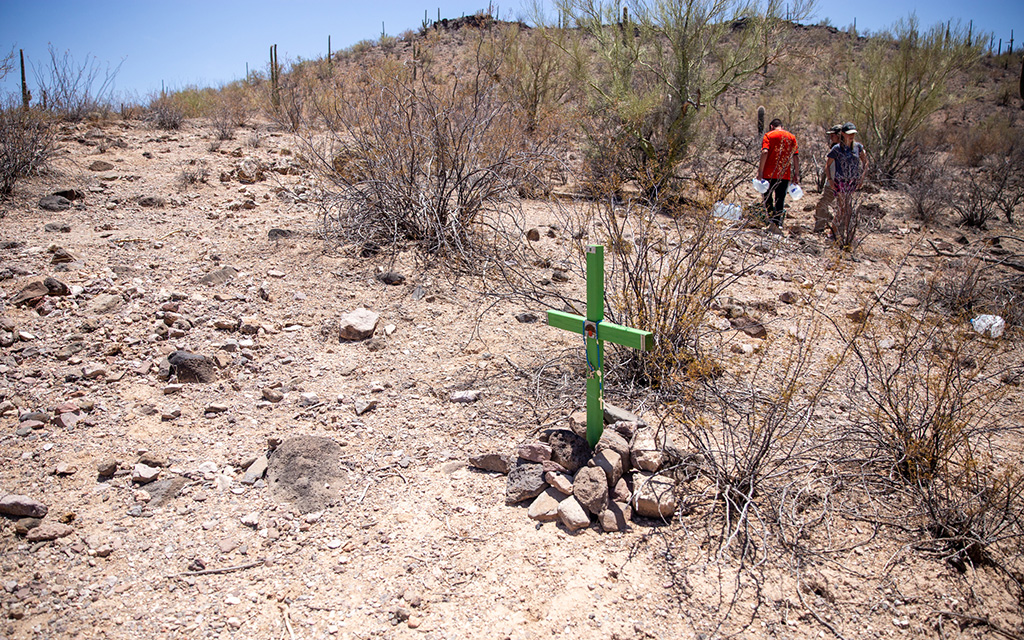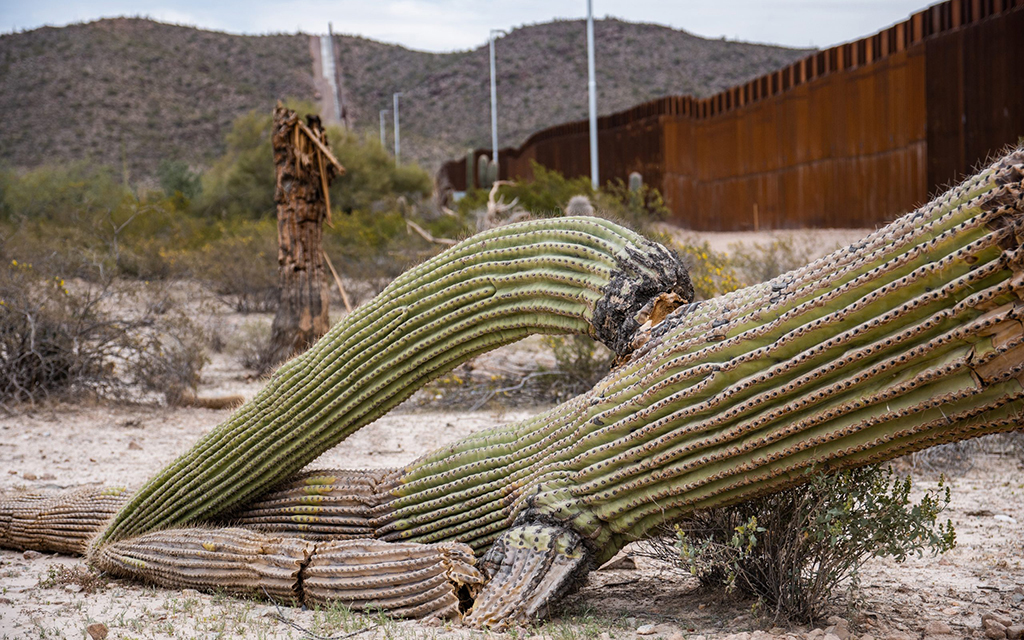WASHINGTON – Migrant encounters at the southern border surged in August, to almost 233,000 for the month, with the Tucson sector posting the highest numbers in the nation for the second straight month, according to Customs and Border Protection.
CBP data released Friday show that 48,754 migrants were encountered in the Tucson sector, which includes most of the Arizona border, up nearly 10,000 from July and more than 2.5 times the number of migrants encountered in the sector from the previous August.
It was part of an overall surge that saw encounters across the border rise from 144,000 in June to 183,000 in July before rising again in August. More than 2.2 million migrants have been encountered at the southern border so far in fiscal 2023, according to CBP, with one month still to go in the year.
The growth is taxing border officials’ ability to keep up, delaying border crossing times for businesses and travelers, and severely straining the resources of government and private organizations that aid migrants.
“These changes kind of occur to the shelters in the drop of a hat,” said Diego Piña Lopez, director of Casa Alitas, a migrant shelter in Tucson. He estimated that there have been “close to 50,000 or more folks that we’ve helped in the last two months” at his shelter.
Piña Lopez said the growing demand and the changing face of migrants – who now come from around the globe – has forced organizations like his to work together in order to stay one step ahead of “crisis mode.”
“I think it’s been phenomenal to see…the changes of practices between all of us to be able to receive and work with folks – and each other – in a better, more cohesive way,” Piña Lopez said.
But it is still a struggle for border communities to meet the needs of all the migrants who show up, local officials say.
Yuma County Supervisor Jonathan Lines told a U.S. House hearing last week that his county faces millions of dollars in uncompensated costs for care of migrants. The Yuma sector saw encounters drop from a high of almost 31,000 in December to 6,735 in August – but has seen a total 168,268 so far this fiscal year, according to CBP.
Lines, who is also chairman of the Yuma Community Food Bank, said Tuesday that much of its food goes to help migrants, who either show up at the food bank directly or go to another nongovernmental organization for help.
He said the food bank had received about 500,000 pounds of food from the Church of Jesus Christ of Latter-day Saints in Salt Lake City and “dispersed almost 80% of that to 17 NGOs in the county who have provided direct assistance” to migrants.
Colleen Putzel, an analyst at the Migration Policy Institute, said it is not just local communities that are struggling. Federal agencies are also scrambling to adjust, she said.
“This is obviously going to put a strain on the border patrol facilities there, just because it’s something that they haven’t experienced recently,” Putzel said of the surging numbers.
CBP recently said it was shifting Office of Field Operations officers away from their normal port of entry postings to help process the large numbers of migrants. In a statement Monday, the agency said it is working to return to normal operations as quickly as feasible, but that the shift in operations will continue as needed.
It is hard to pinpoint why migration patterns change, but Putzel said it can be the result of migrants taking a different route from their home countries or from word-of-mouth between those traveling. Sometimes, it can be a tactic used by cartels to overload smaller ports of entry, making it easier for them to smuggle goods or people through.
“We do know that smugglers play a large role in where migrants go,” Putzel said. “That often can be a reason why people are going to specific sectors.”
But Ira Mehlman, spokesperson for the Federation for American Immigration Reform, sees the surge as a direct result of Biden administration immigration policies that “send a very clear message to people that if you come to the United States illegally, we’re going to let you in.”
“The Mexican cartels, they run our immigration policy,” Mehlman said. “So until the Biden administration decides it’s our immigration policy – not the criminal cartels’ immigration policy – we’re going to keep seeing this happen.”
But organizations like Casa Alitas have no control over how many individuals they have to make room for day in and day out, or who shows up. And Piña Lopez said people are increasingly coming from around the globe.
“We’re starting to see more and more countries coming through. As I mentioned, Mauritania, Senegal, India,” he said.
While those refugees would normally “be fleeing and going to the countries nearest to them, they’re now finding themselves having to go to the U.S. because of the policies in these other countries.”
“The main thing has always been for Casa Alitas is … recognizing people for who they are when they come through the door,” Piña Lopez said.



